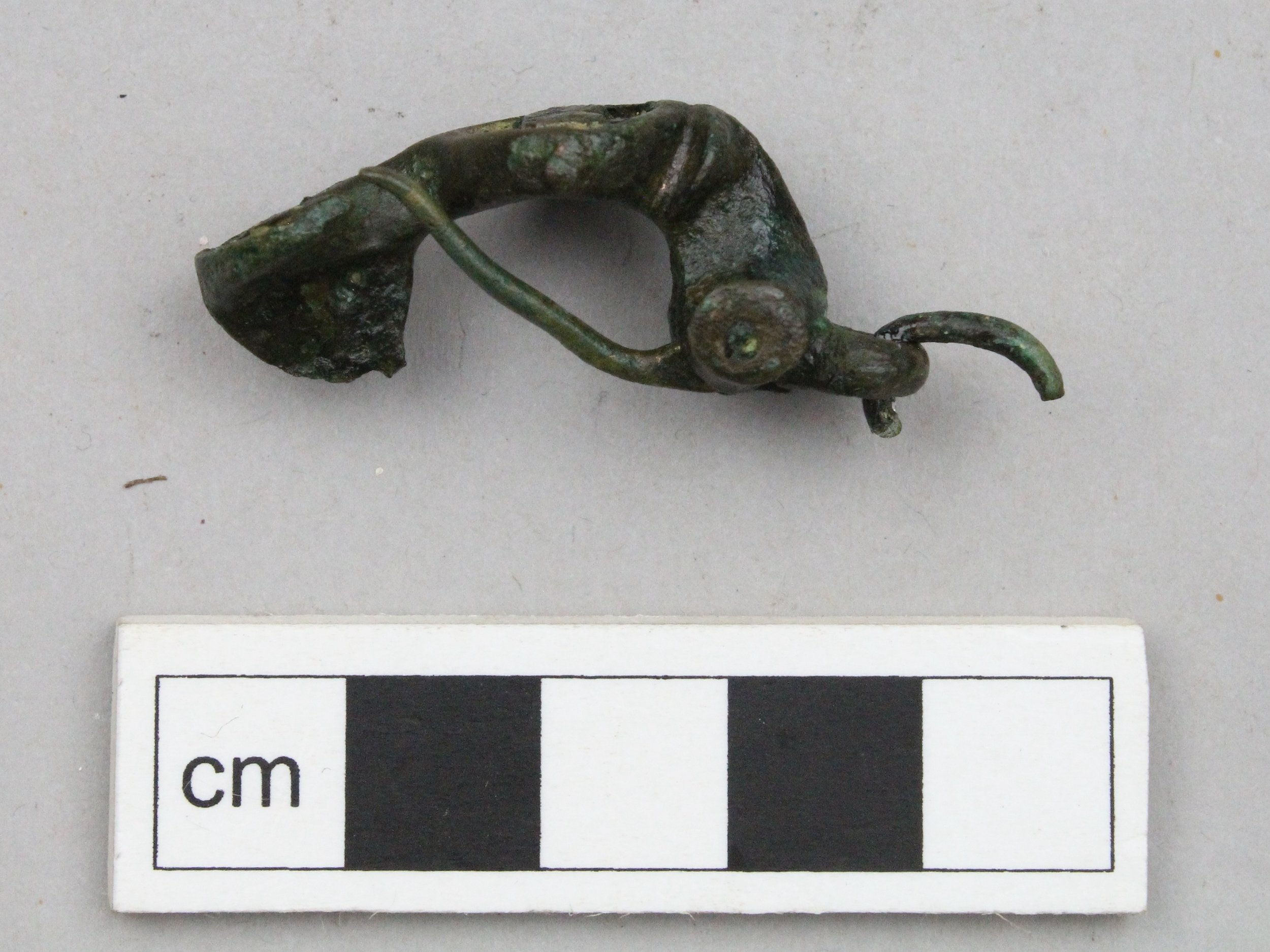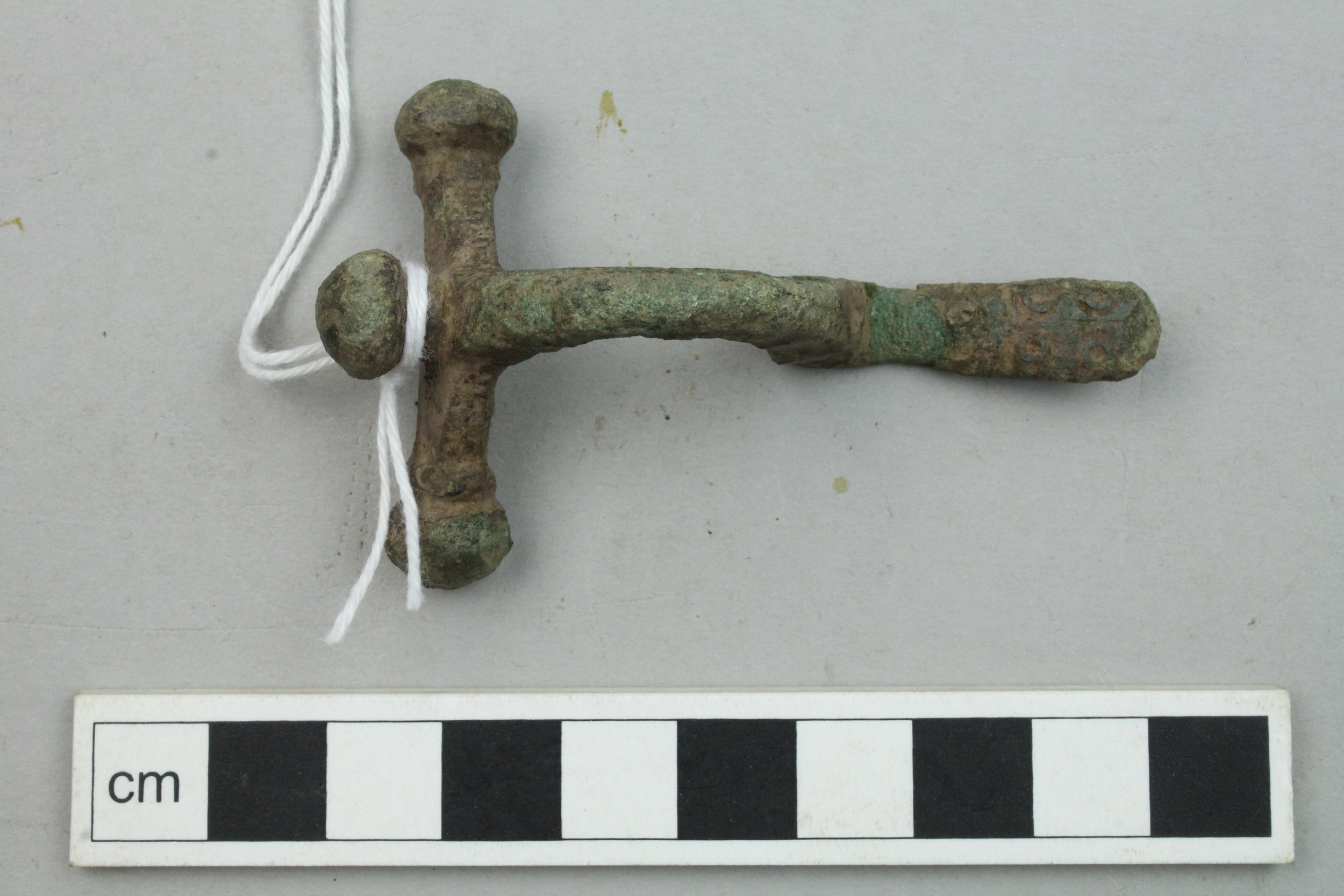Ritual Offerings
With us for conservation we have several complete and fragmentary brooches that were found near Loch Leven in recent years, including the fantail brooch, about which we recently posted - The Red Brooch — AOC Archaeology Group.
Partial draining of the loch in the 19th century meant that certain areas which were previously underwater are now dry, resulting in the discovery of a wide range of objects, from prehistoric to medieval. Based on these discoveries, it is believed that the loch was a votive site used for making ritual offerings.
This Romano-British trumpet brooch (pictured below), found near Kinnesswood, came to us in a rather rough state. It was almost entirely covered in a thick, hard crust of corrosion and soil, which completely obscured the intricate details and decorations of the brooch. However, this crust also helped to preserve the metal underneath, as it prevented oxygen and moisture from reaching the metal surface. This prohibited corrosion issues, and allowed for the brooch to look almost new after centuries of being buried underground.
In order to reveal the object’s original shape and decorations, our conservator Simeon carefully removed the crust using a scalpel. After that the brooch was stabilised and lacquered.
Above - Romano British Trumpet Brooch - Before Conservation
Above - Romano British Trumpet Brooch - After Conservation
Crossbow brooches, like the one pictured below, are rarely found in Scotland, and are usually associated with Roman officials, particularly military ones. This particular one was also found near Kinnesswood, and dates to the 4th century. It is made of gilded copper alloy and has punched ring and dot decoration, sometimes referred to as ‘bullseye’ decoration, on the foot and along the edges of the high arched bow. The soiling on this brooch was gently removed using soft glass bristle brushes; the metal was then stabilized and the brooch lacquered to prohibit further corrosion.
Above - Crossbow Brooch - Before Conservation
Above - Crossbow Brooch - After Conservation (left & right) and detail of ring and dot decoration (right)
In addition to these brooches, we also have with us a fragment from a headstud brooch (below left) with small parts of red and blue enamel remaining, found in Easter Balgedie, and another example of a plate brooch (below right), found near Scotlandwell. Unfortunately most of the original surface on this plate brooch has degraded, along with any traces of possible decorations.
Above - After Conservation - Headstud Brooch (left) & Plate Brooch (right)













